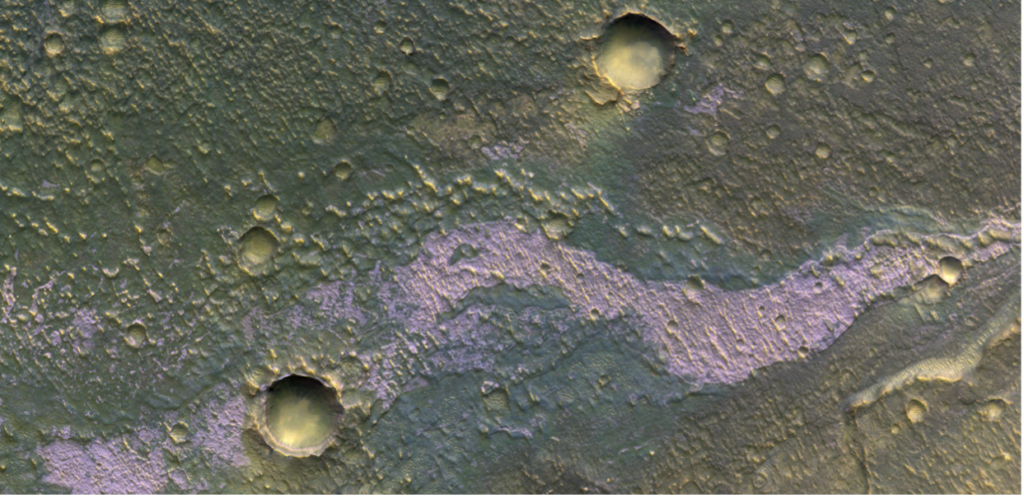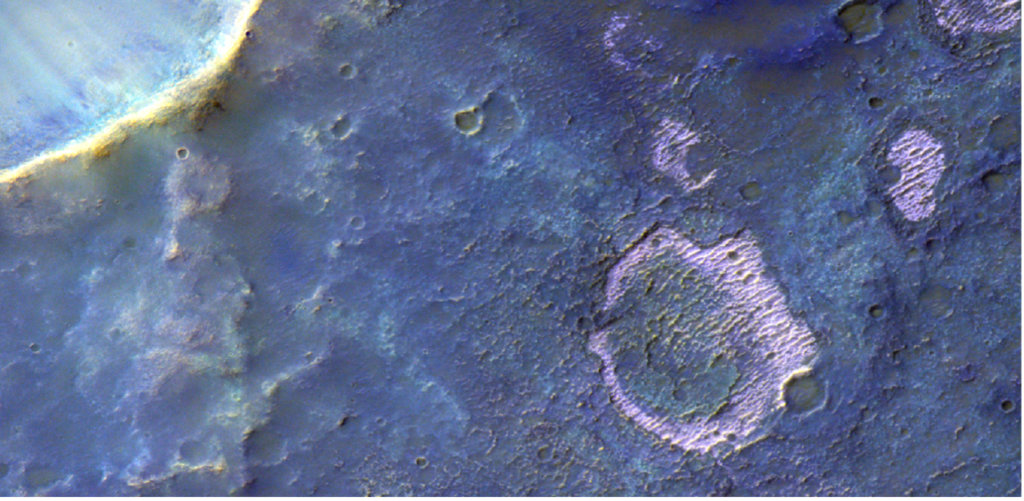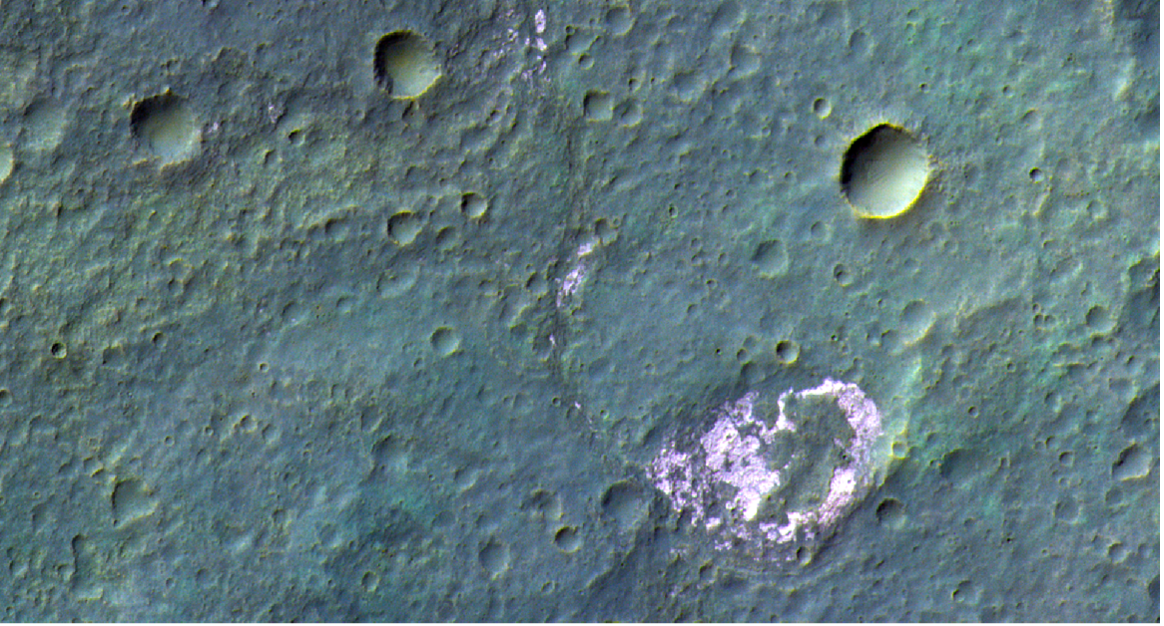The European Space Agency has published several images taken by the TGO spacecraft. They depict unusual structures on the Martian surface. These are traces left by ancient water bodies of the Red Planet.

Mars is currently a desert world. However, 3.5 billion years ago, it was covered with rivers, huge lakes, and possibly oceans. The Cold Era began when Mars lost its magnetic field and could no longer hold its own atmosphere, causing water to evaporate, freeze, or become trapped on the surface. Over time, it disappeared completely from the surface, leaving behind salt deposits.

According to scientists, these salt imprints could be a beacon for Martian life. The very salty waters could be the last oasis for hypothetical organisms. The high concentration of salt allowed the water to remain liquid at temperatures as low as -40 °C.
These are exactly what you can see in the TGO images. The spacecraft used the CaSSIS camera to detect multiple sodium chloride deposits in the cratered region of Terra Sirenum, meaning “Sea of the Sirens” in Latin. They most likely formed from shallow ponds of water or brine vaporized by the Sun.

In one of the TGO images, you can see the bed of a dried up river that once flowed here. Another photo captures an even more unusual structure resembling a smiley face. It is worth noting that salt deposits cannot be seen on ordinary black-and-white images. They only appear in infrared images.

According to the scientists, TGO has discovered a total of about a thousand potential salt deposits ranging from 300 to 3,000 meters in diameter. They are good candidates for future robotic missions. By studying them, scientists will be able to look into the past of ancient Mars and learn about when a certain region was covered by water for the last time.
Earlier we told you about how scientists found signs of liquid water beneath the surface of Mars.
According to ESA


